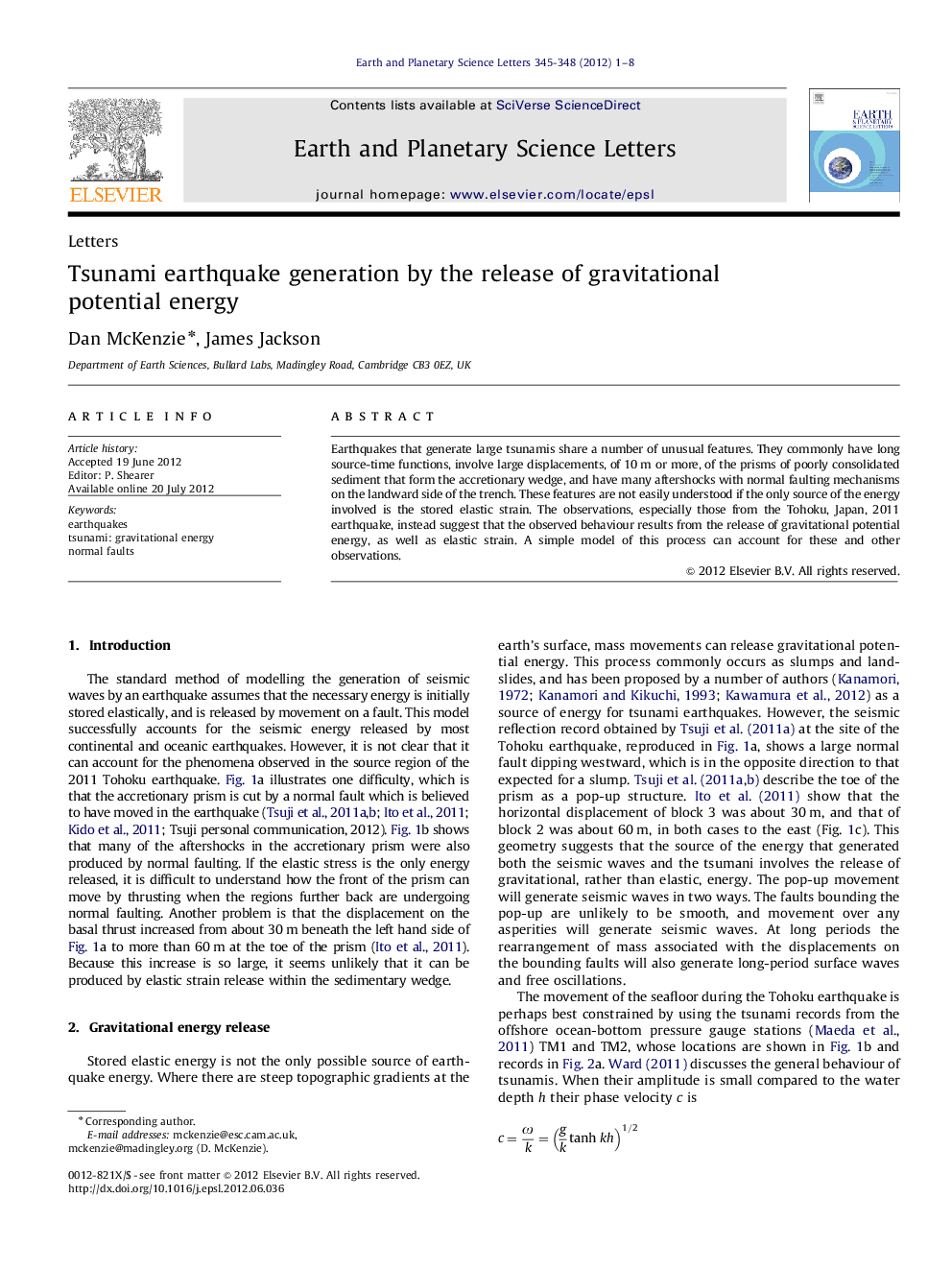| کد مقاله | کد نشریه | سال انتشار | مقاله انگلیسی | نسخه تمام متن |
|---|---|---|---|---|
| 6430556 | 1634799 | 2012 | 8 صفحه PDF | دانلود رایگان |

Earthquakes that generate large tsunamis share a number of unusual features. They commonly have long source-time functions, involve large displacements, of 10Â m or more, of the prisms of poorly consolidated sediment that form the accretionary wedge, and have many aftershocks with normal faulting mechanisms on the landward side of the trench. These features are not easily understood if the only source of the energy involved is the stored elastic strain. The observations, especially those from the Tohoku, Japan, 2011 earthquake, instead suggest that the observed behaviour results from the release of gravitational potential energy, as well as elastic strain. A simple model of this process can account for these and other observations.
⺠Large tsunami earthquakes release gravitational potential energy. ⺠The release occurs on faults that dip towards their island arcs, not by slumping. ⺠Many tsunami earthquakes show normal faulting within their accretionary prisms.
Journal: Earth and Planetary Science Letters - Volumes 345â348, September 2012, Pages 1-8